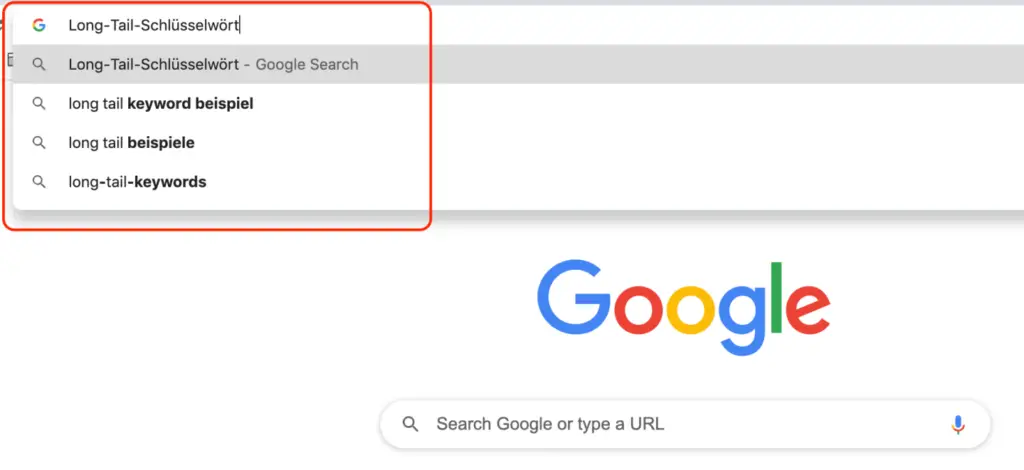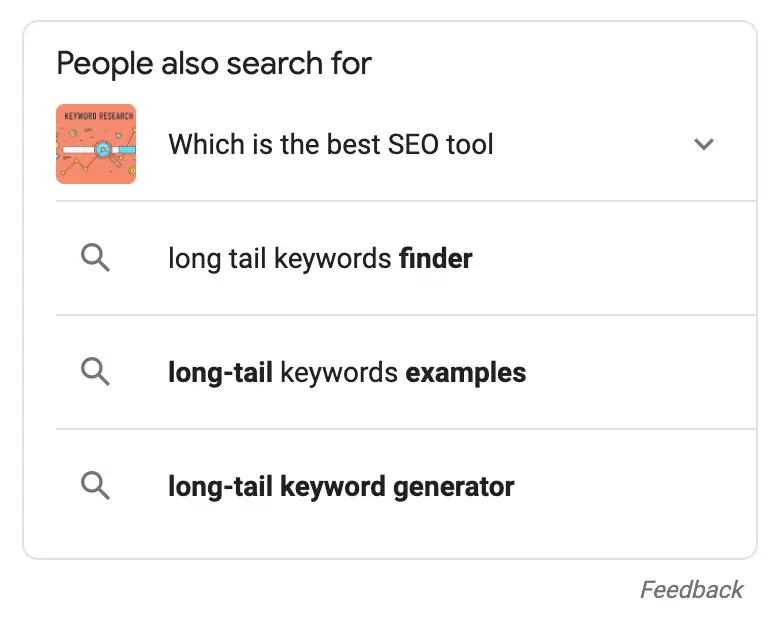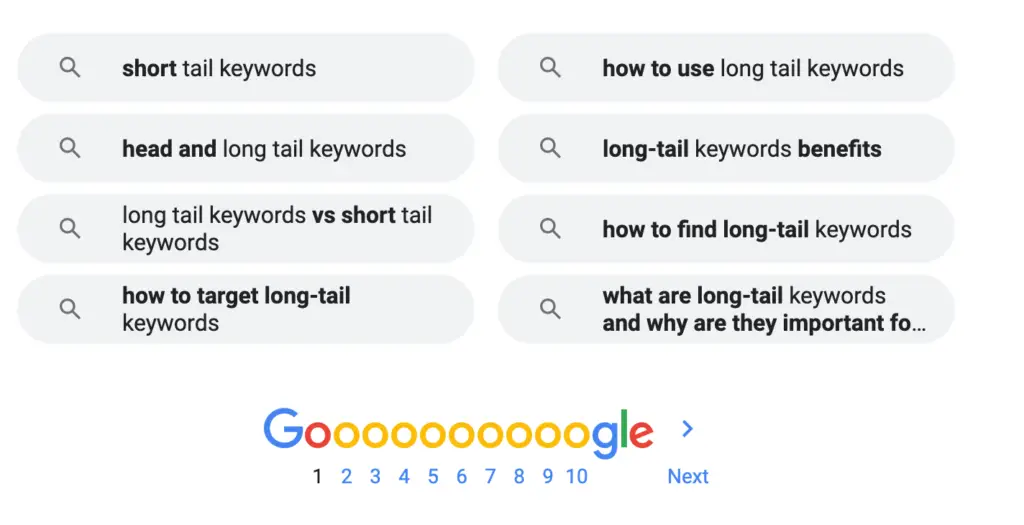Long-tail keywords are the underdog of SEO. Nobody wants to use them because of the low search volume, but they offer a strong punch. With the right approach, long-tail keywords can help you bypass the tough competition, attract selected snippets, and deliver not only traffic but actual paying customers as well. Here’s how.
In this guide, you will learn:
- What are long-tail keywords
- What role do long-tail keywords play in SEO?
- Secrets to choosing long-tail keywords for your SEO content
What are long-tail keywords?
Long-tail keywords are longer search phrases (usually three or more words) with highly specific search intent. Because these keywords are more unique, they have a lower search volume.
Because these keywords are more targeted, they have higher conversion rates.
Short-tail keywords are shorter search phrases (less than three words) with broader search intent. Because these keywords are more general, they tend to have higher search volumes and lower conversion rates.
Of course, the length of the search term is just a rule of thumb. In reality, long-tail keywords are named not because they are long, but because they come from the long-tail of the search volume curve:
The short-tail keywords consist of a small number of keywords with a high search volume. The long-tail keywords consist of a large number of keywords with a low search volume.
And while long-tail keywords tend to be longer and short-tail keywords tend to be shorter, the real difference is search volume, not keyword length.
Why use long-tail keywords?
Why use long-tail keywords when they have a low search volume? Because contrary to popular belief, search volume is not the decisive factor for keyword quality. Other factors such as intent and competition should also be considered when researching keywords.
Here are some reasons to use long-tail keywords on your website:
Long-tail keywords have smaller competition
Short-tail keywords are incredibly competitive – everyone wants a slice of high-traffic SERPs. But because they are so competitive, only the websites with the highest authority can rank on page one. We are talking about key players in the industry.
Unless you’re a major industry player, it can be a waste of time to compete for short-tail keywords. Yes, your keywords are searched thousands of times a month. But what’s the point when all of your traffic goes to your competitors?
More importantly, the keyword difficulty decreases dramatically as the keywords get longer. This means that high-ranking websites have fewer backlinks, less optimized content, and other signals of authority.
Long-tail keywords usually refer to a much smaller niche of products and services that are easier to compete in. For example, every bike shop sells bikes, but not all sell gravel bikes. Of those who do, hardly any stores sell titanium gravel bikes.
If you are selling titanium gravel bikes this should be the keyword you optimize for first. Yes, it only searches 1,000 times a month, but there’s a good chance you will rank on Google’s page 1 and get highly targeted traffic.
Long-tail keywords already contain short-tail keywords
Optimizing for long-tail keywords does not come at the expense of short-tail keywords. It’s not an either-or situation. In the following example, the long-tail keyword contains two shorter keywords that may also serve as a signal for more general searches. With this approach, you can kill two birds with one stone.
Long-tail keywords are perfect for PPC and other ads
Internet marketers agree that, for the most part, Pay Per Click (PPC) advertising should be long-tail advertising. And here’s why. In PPC, you pay every time someone clicks your ad. If you’re bidding on non-specific, very broad terms, you will likely get a lot of clicks, but with fewer conversions. This way, a lot of money is wasted on targeted traffic and no real customers are acquired.
However, if you bid on more specific long-tail search terms that better describe what you are selling or offering, you will likely attract just the right visitors to your website and your PPC campaign will pay off sooner. A closer match with queries ultimately makes advertising cheaper.
Long-tail keywords are what Google wants
You must have noticed that Google is now able to serve very narrow search intentions. It can display a small fragment of a video as a separate search result, index passages, and do a whole lot with featured snippets and other SERP enhancements. All of these features are based on long-tail keywords.
Basically, Google needs bite-sized information that is optimized for long-tail queries. In this way, certain search intentions can be fulfilled quickly and efficiently.
And as content creators, we have no choice but to accommodate Google. Think about it like this. Instead of loosely optimizing an article for a keyword and some of its variations, create an article with each segment optimized for a specific long-tail keyword.
To give you an example of what I mean, here is a piece of text from this article:

The H2 heading for this section is a query-like keyword written in natural language. The first sentence after the heading also begins with a keyword. And the entire paragraph is just under 40 words – the perfect length for a featured excerpt.
How to find long-tail keywords
The easiest way to convert a short-tail keyword to a long-tail keyword is to google it. You can then use Google’s recommendation system to find more keyword variations.
The first place to look is on Google auto-complete. Just enter your keyword and Google will suggest a dozen or so ways to end it. These are your primary long-tail keywords:

Once you are on the search results page, you can start looking around for other long-tail keyword suggestions. Often, there is a section at the top of the page that lists some frequently asked questions about your request:

At the bottom of the page you will find a related searches section with a few ways to modify your query and make it more specific:

How to optimize for long-tail keywords
Start optimizing your pages by adding long-tail keywords to titles and descriptions. Paste the link to a page you’d like to tweak (or create a new one), add your master keyword, wait a moment while the software does a page check – and you’ve got a list of tips for tweaking your page.
Use these tips to add missing long-term keywords to your copy:
Start using long-tail keywords for your H2 and H3 headings
As explained at the beginning of this article, long-tail keywords are great for section headings on your pages.
For example, let’s say I run an online bike shop and have a blog post titled How do I choose a bike?
This type of blog post can now easily be broken down into several semi-independent sections, each of which can be mapped to a different long-tail keyword.
If I choose my keywords correctly, Google can use my content to serve a whole range of search intentions.
Start optimizing your pages by adding long-tail keywords to titles and descriptions. Use these tips to add missing long-term keywords to your copy.
Add long-tail keywords to your content sections
If you have a bunch of long-tail keywords that seem relevant to a page but can’t edit them organically, consider adding an FAQ section. Turn your long-tail keywords list into questions, provide answers, and add a section to the bottom of your page.
It’s great for product pages, landings, and all kinds of service pages (info, contacts, terms, and conditions, etc.).
The added benefit of FAQs is that you can expand them with schema markup and improve your chances of getting noticed by Google.
Optimize internal and external links with long-tail keywords
Internal links are great places for your long-tail keywords. Include them in the anchor text when inserting a link to one page on another page, and make sure the anchors sound diverse and natural.
It is recommended to link from page rankings for long tails to pages with broad, more popular keywords (e.g. from product to category). This will help build PageRank and make certain pages better known.
The same goes for the backlinks that you can control. When linking to a page from an external resource (be it a guest post or another website of yours), use a variation of the long-tail keyword for the anchor text of the backlink. External links need to be built into the content to make it difficult to remove without rewriting the text. Long-tail keywords serve this purpose very well.
Final thoughts
These are the basics of your long-tail keywords strategy to successfully control convertible traffic. If you properly implement the long-tail keyword strategy on your pages, your website is guaranteed to increase visibility and reach a larger, more convertible audience.

